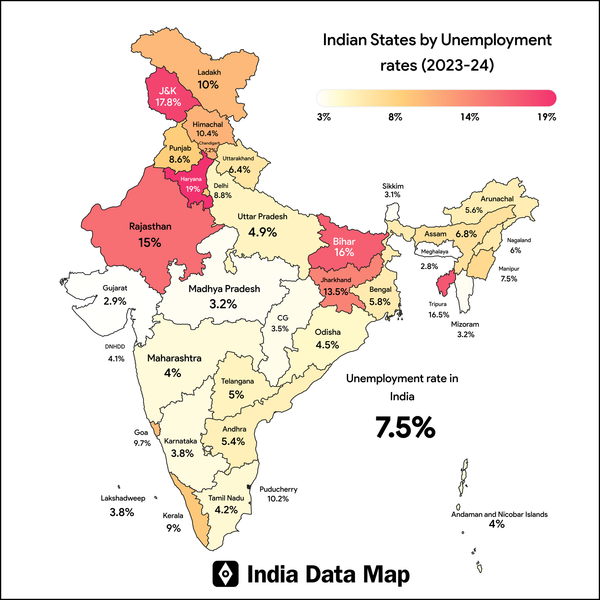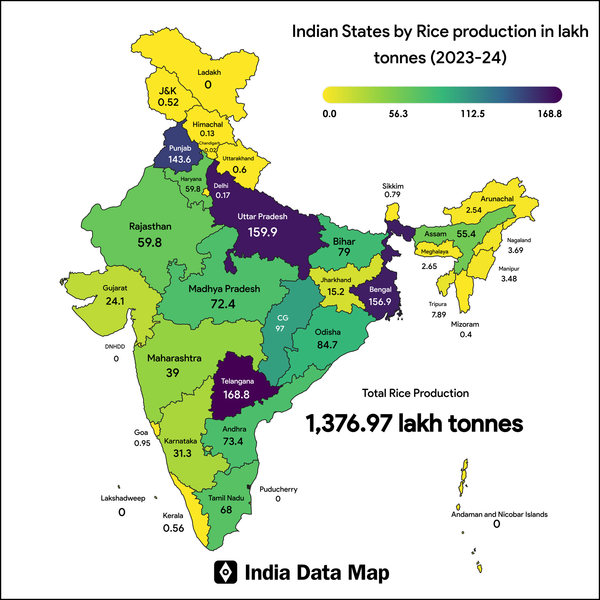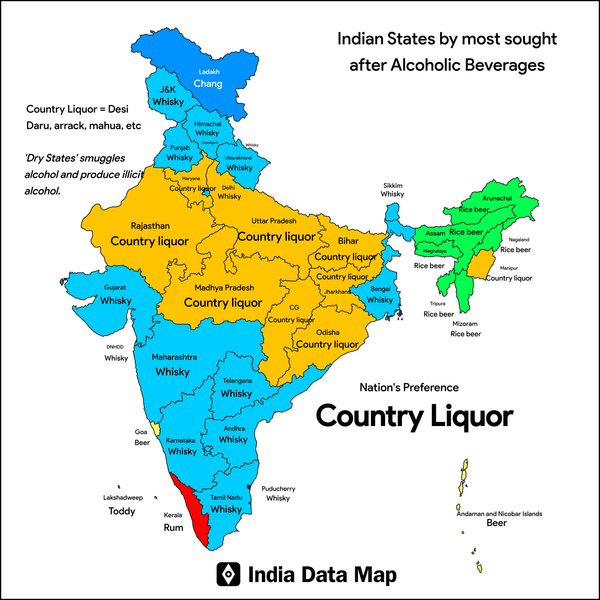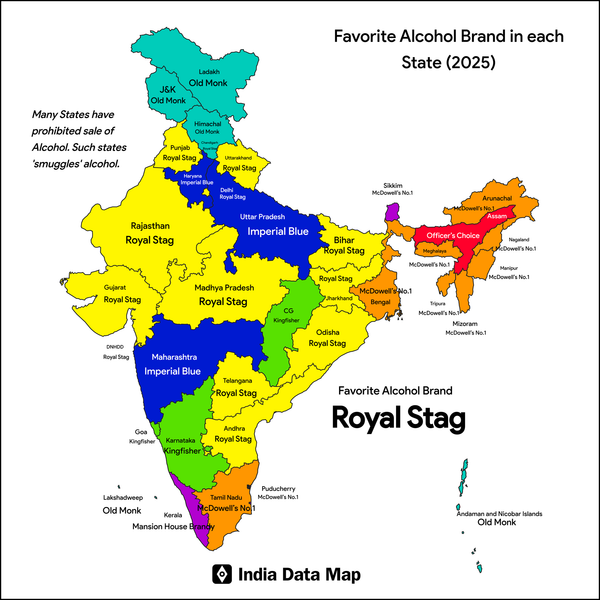Map: Indian States by production of Food Grains in Lakh tonnes (FY 2023-24)
Discover India's grain production by state in 2023–24. See top producers, regional patterns, and key insights from official agriculture data.
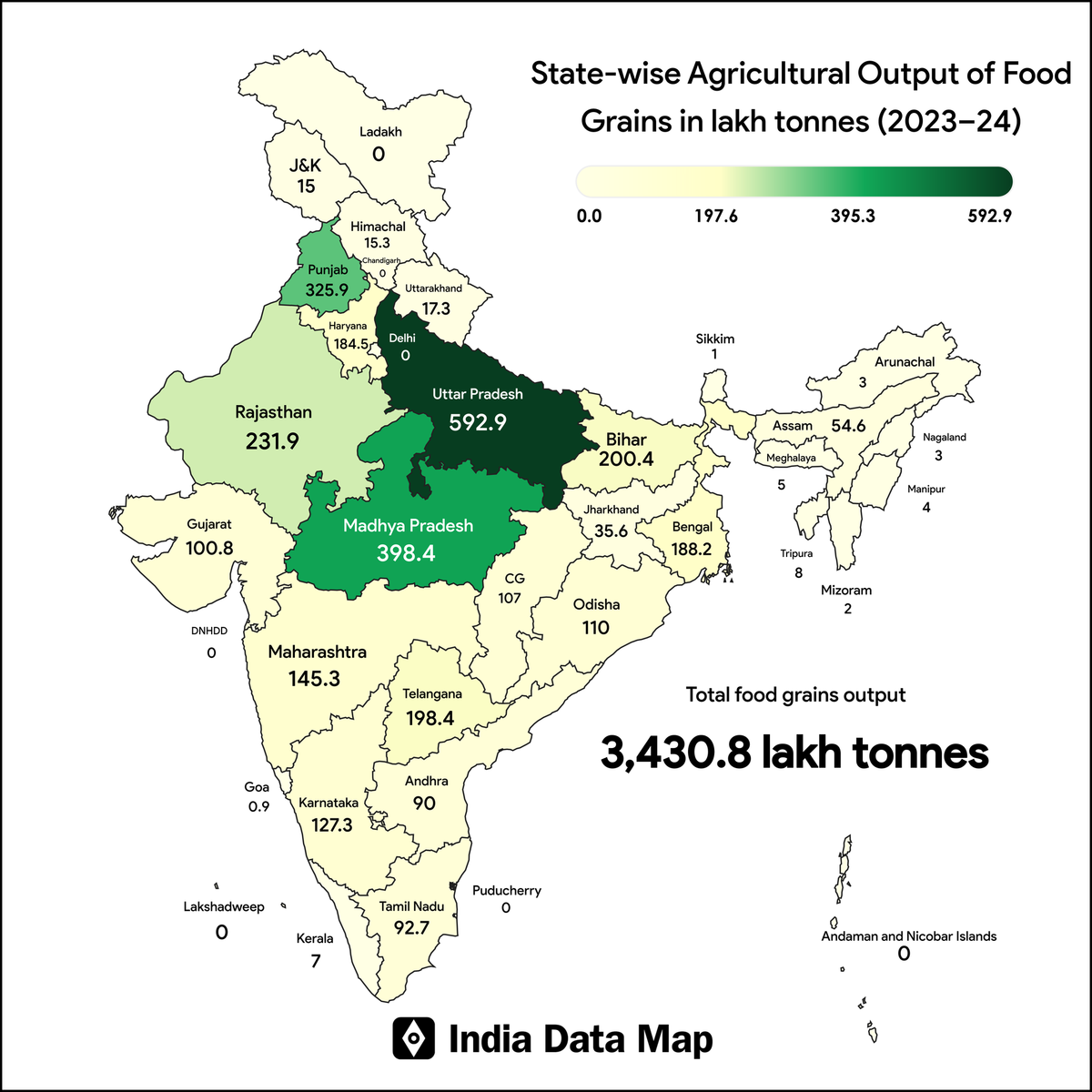
India's agricultural foundation is prominently showcased through its grain production across various states and union territories. As per the most recent estimates for 2023–24, the total food grain production is an impressive 3,430.8 lakh tonnes, highlighting the nation's crucial position as a global agricultural leader.
| State/UT | Food Grain Production (lakh tonnes) |
|---|---|
| Uttar Pradesh | 592.9 |
| Madhya Pradesh | 398.4 |
| Punjab | 325.9 |
| Rajasthan | 231.9 |
| Telangana | 198.4 |
| Bihar | 200.4 |
| West Bengal | 188.2 |
| Haryana | 184.5 |
| Maharashtra | 145.3 |
| Karnataka | 127.3 |
| Chhattisgarh | 107.0 |
| Odisha | 110.0 |
| Gujarat | 100.8 |
| Tamil Nadu | 92.7 |
| Assam | 54.6 |
| Jharkhand | 35.6 |
| Uttarakhand | 17.3 |
| Kerala | 7.0 |
| Himachal Pradesh | 15.3 |
| Jammu & Kashmir | 15.0 |
| Tripura | 8.0 |
| Meghalaya | 5.0 |
| Manipur | 4.0 |
| Nagaland | 3.0 |
| Arunachal Pradesh | 3.0 |
| Mizoram | 2.0 |
| Sikkim | 1.0 |
| Goa | 0.9 |
| Andaman & Nicobar Islands | 0 |
| Chandigarh | 0 |
| Dadra & Nagar Haveli & Daman & Diu | 0 |
| Delhi | 0 |
| Ladakh | 0 |
| Lakshadweep | 0 |
| Puducherry | 0 |
| Andhra Pradesh | 90.0 |
Top Producers:
Uttar Pradesh stands out as the leading producer, generating nearly 593 lakh tonnes of grains—approximately 17% of the overall output. Close behind are Madhya Pradesh (398 lakh tonnes) and Punjab (326 lakh tonnes), both of which play significant roles in ensuring India's food security.
Regional Insights:
The northern and central plains are the primary contributors to grain production, with states such as Uttar Pradesh, Punjab, Haryana, and Rajasthan yielding substantial amounts thanks to their fertile soils and extensive irrigation systems.
Telangana (198 lakh tonnes) and Andhra Pradesh (90 lakh tonnes) exemplify the southern region's vital contributions, particularly in rice farming.
In the eastern belt, states like West Bengal (188 lakh tonnes) and Bihar (200 lakh tonnes) are essential grain producers.
Smaller Producers:
Numerous northeastern states, hilly areas, and union territories report lower production figures, often below 10 lakh tonnes. For instance, Sikkim (1 lakh tonne), Mizoram (2 lakh tonnes), and Goa (0.9 lakh tonnes) illustrate the geographical and climatic challenges faced in large-scale grain cultivation.
Zero or Negligible Production:
Several union territories, including Delhi, Chandigarh, Lakshadweep, and Puducherry, indicate zero or minimal grain production, frequently due to urbanization, limited land areas, or differing economic priorities.
Agricultural Diversity:
This information also reflects the agricultural diversity present in India. While grain production serves as a significant indicator, states with lower grain yields may thrive in horticulture, spices, or cash crops, thereby contributing to a balanced national agricultural framework.
Concluding Reflection
This overview of grain production by state illustrates the influence of geography, climate, and infrastructure on agricultural productivity throughout India. It provides essential insights for policymakers, agribusinesses, and food security planners aiming to enhance resource optimization and bolster regional agricultural strengths.

